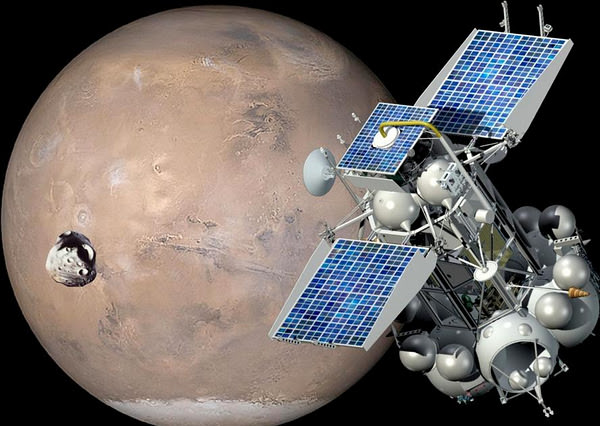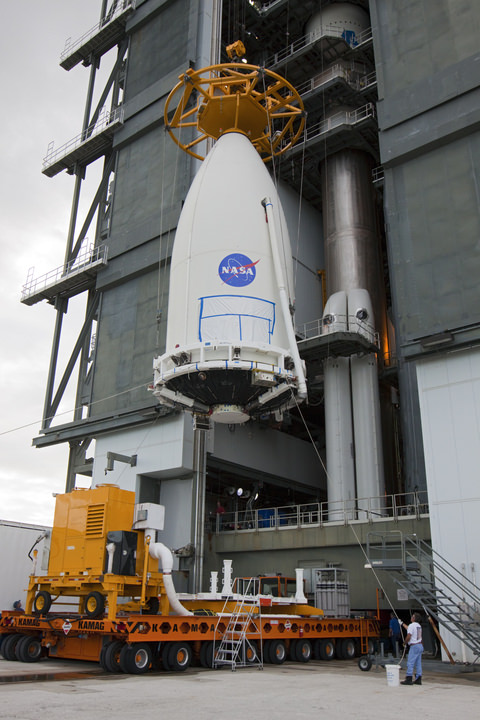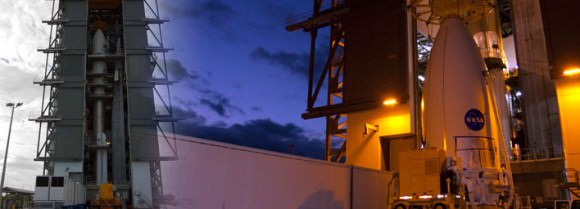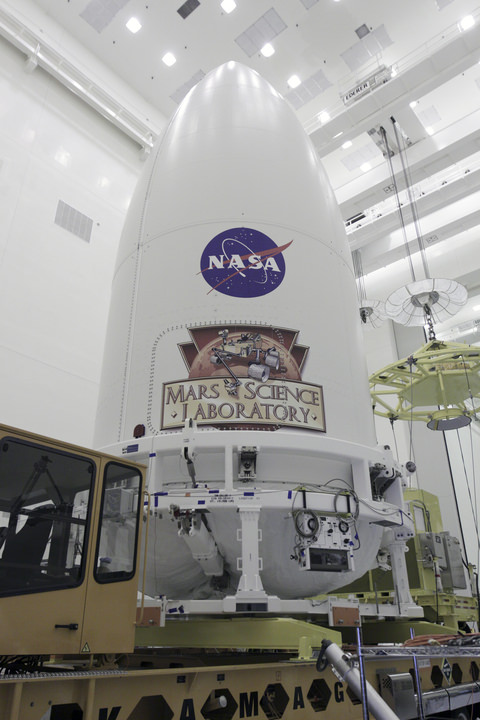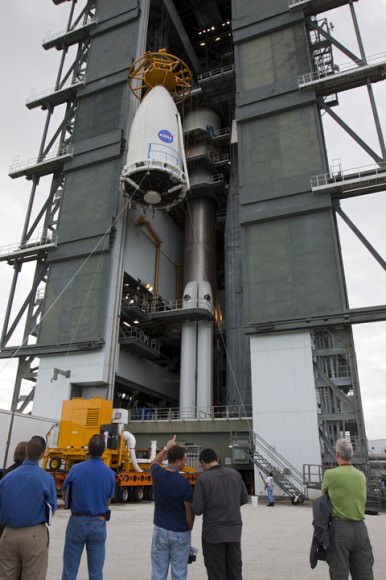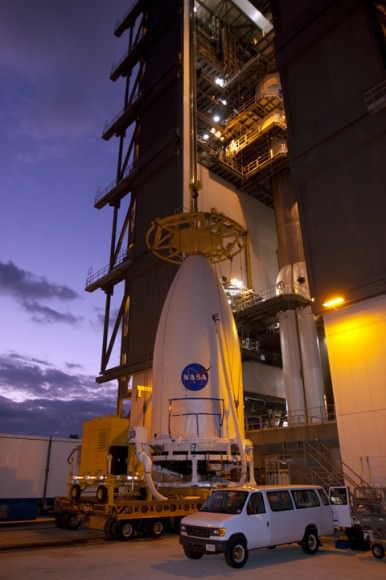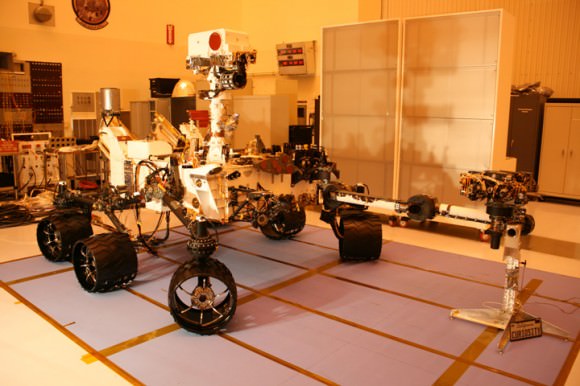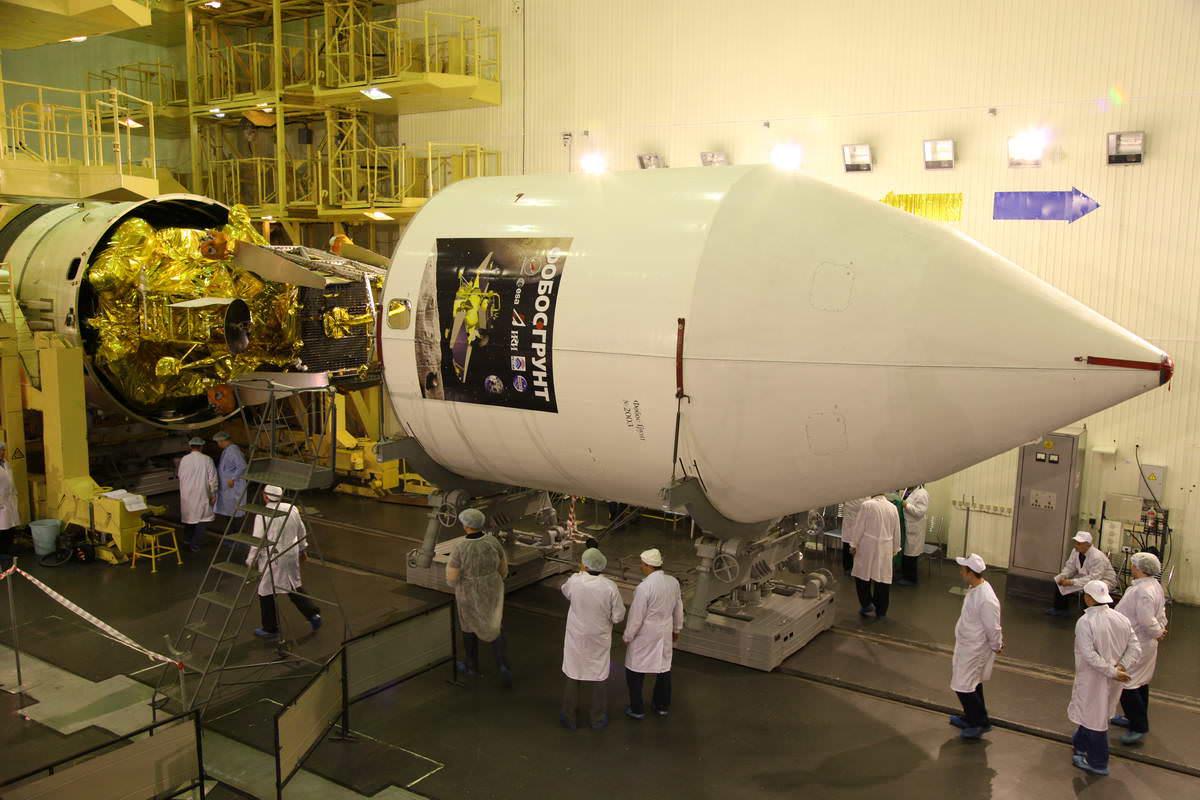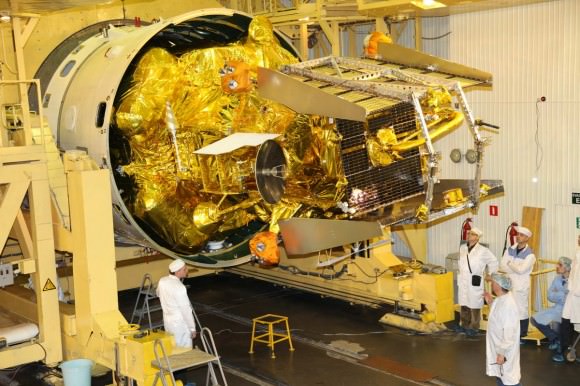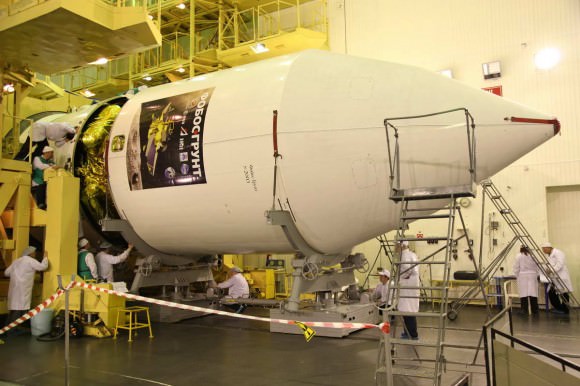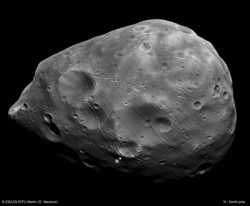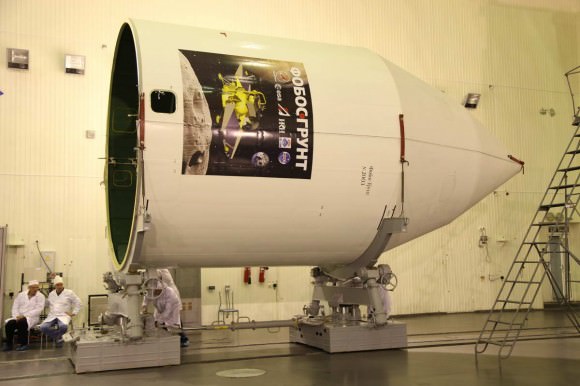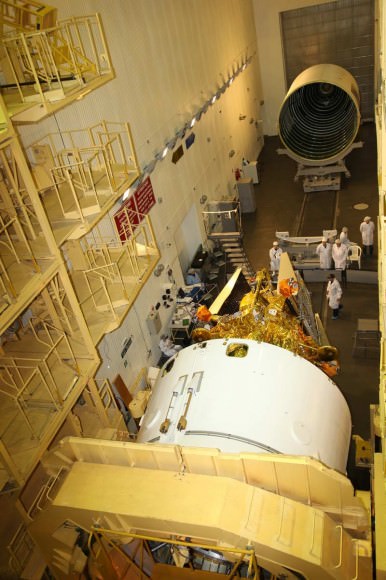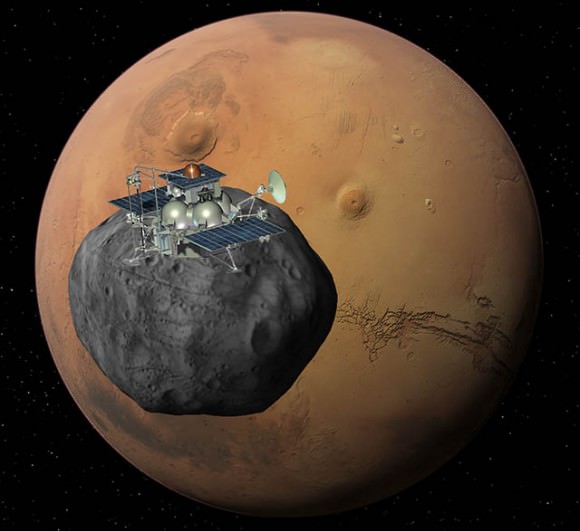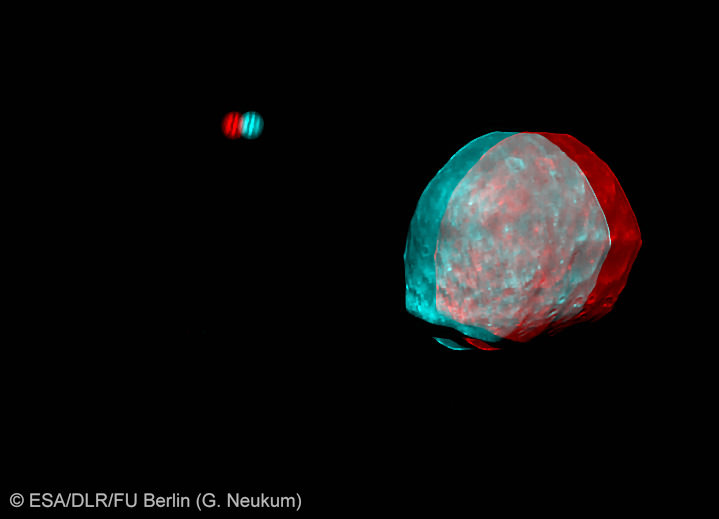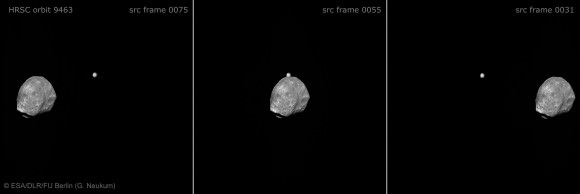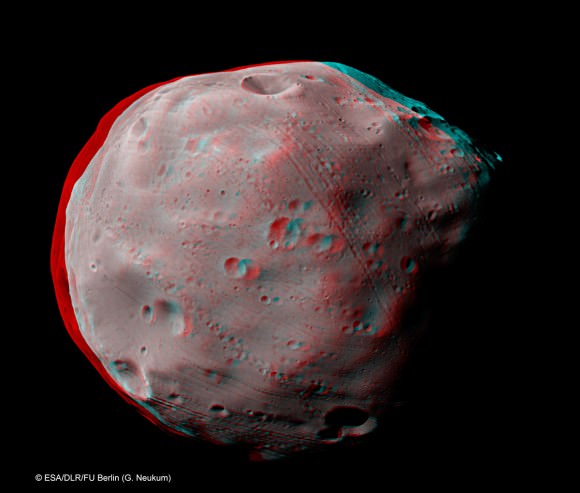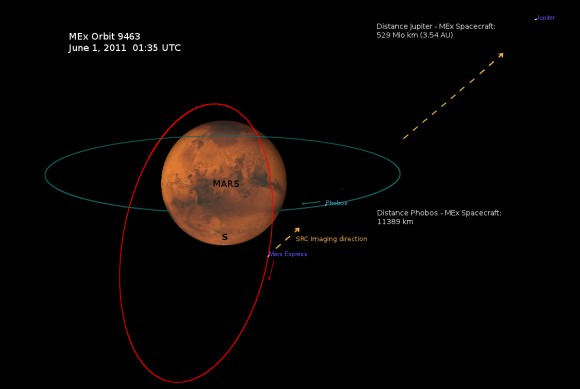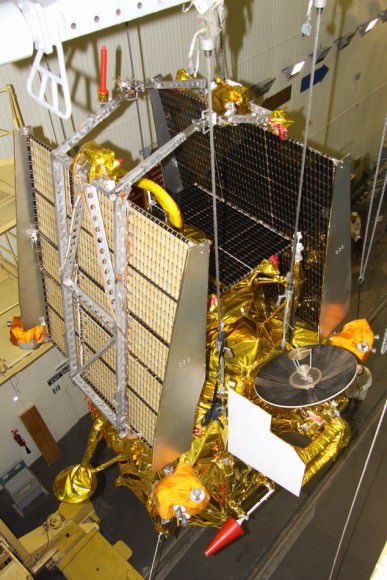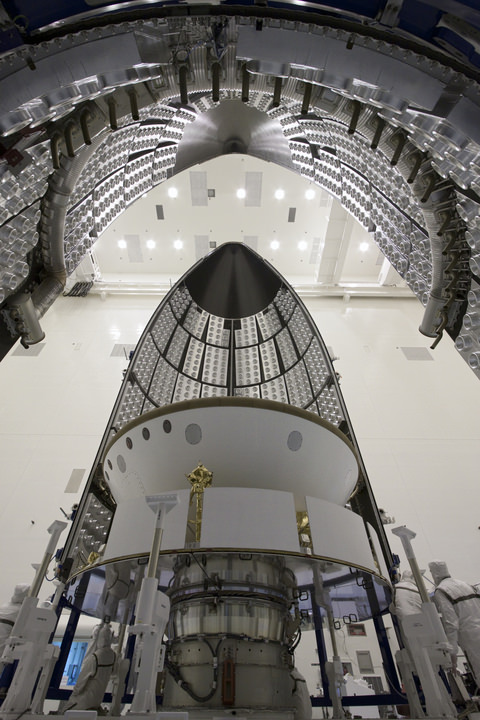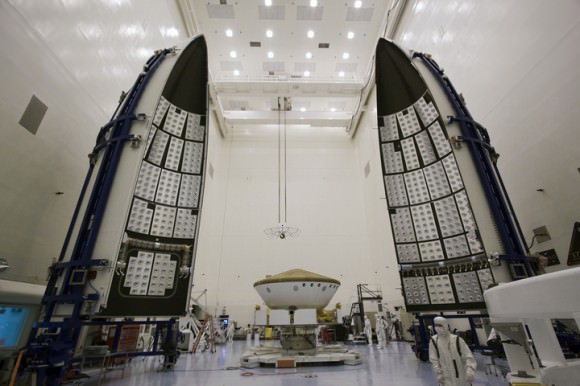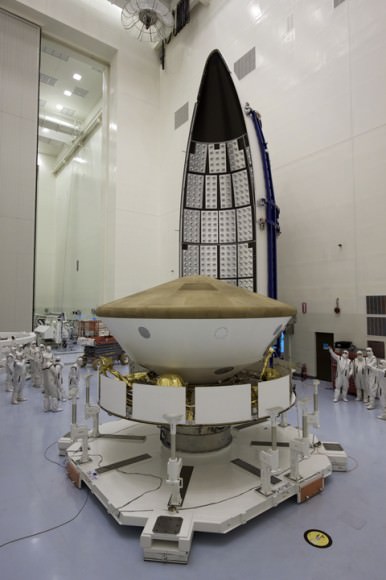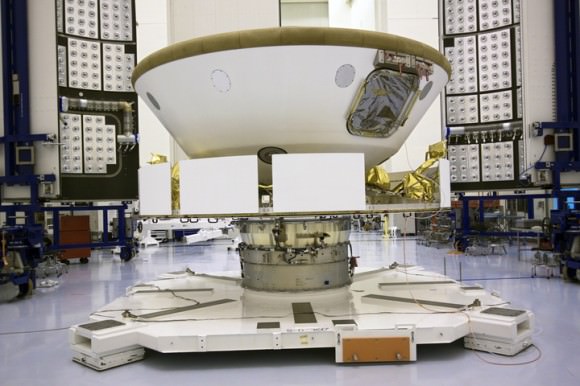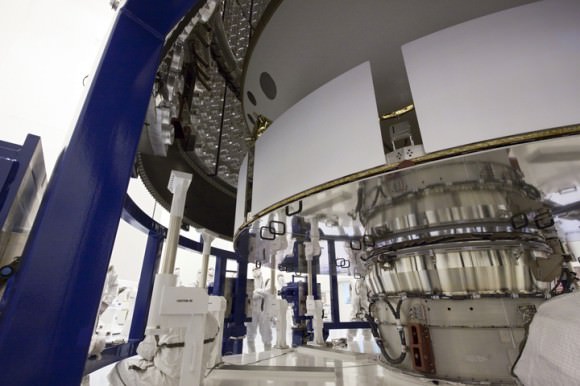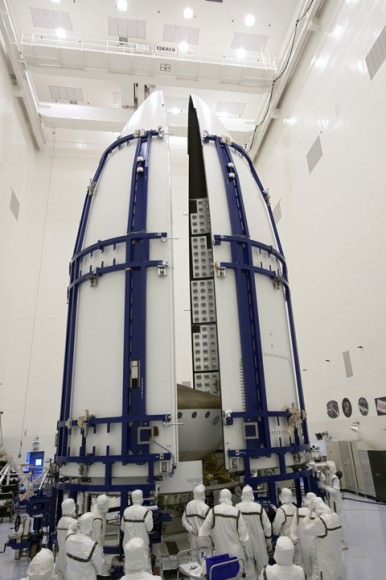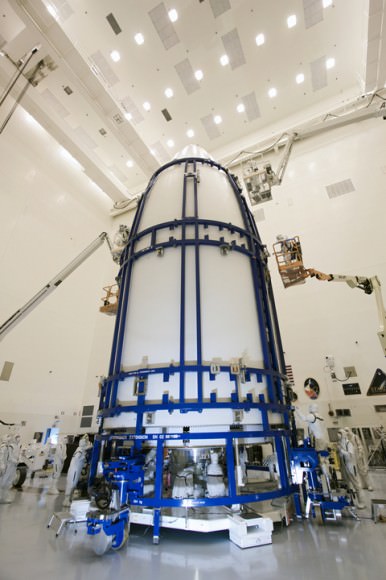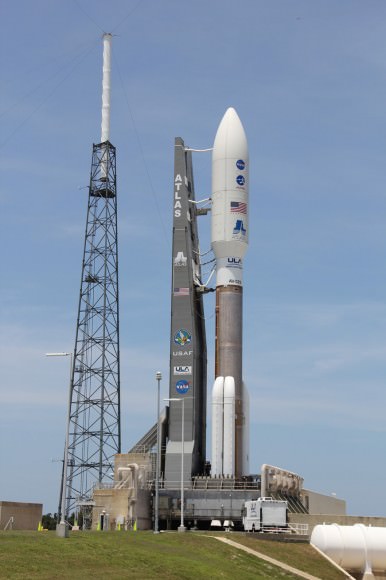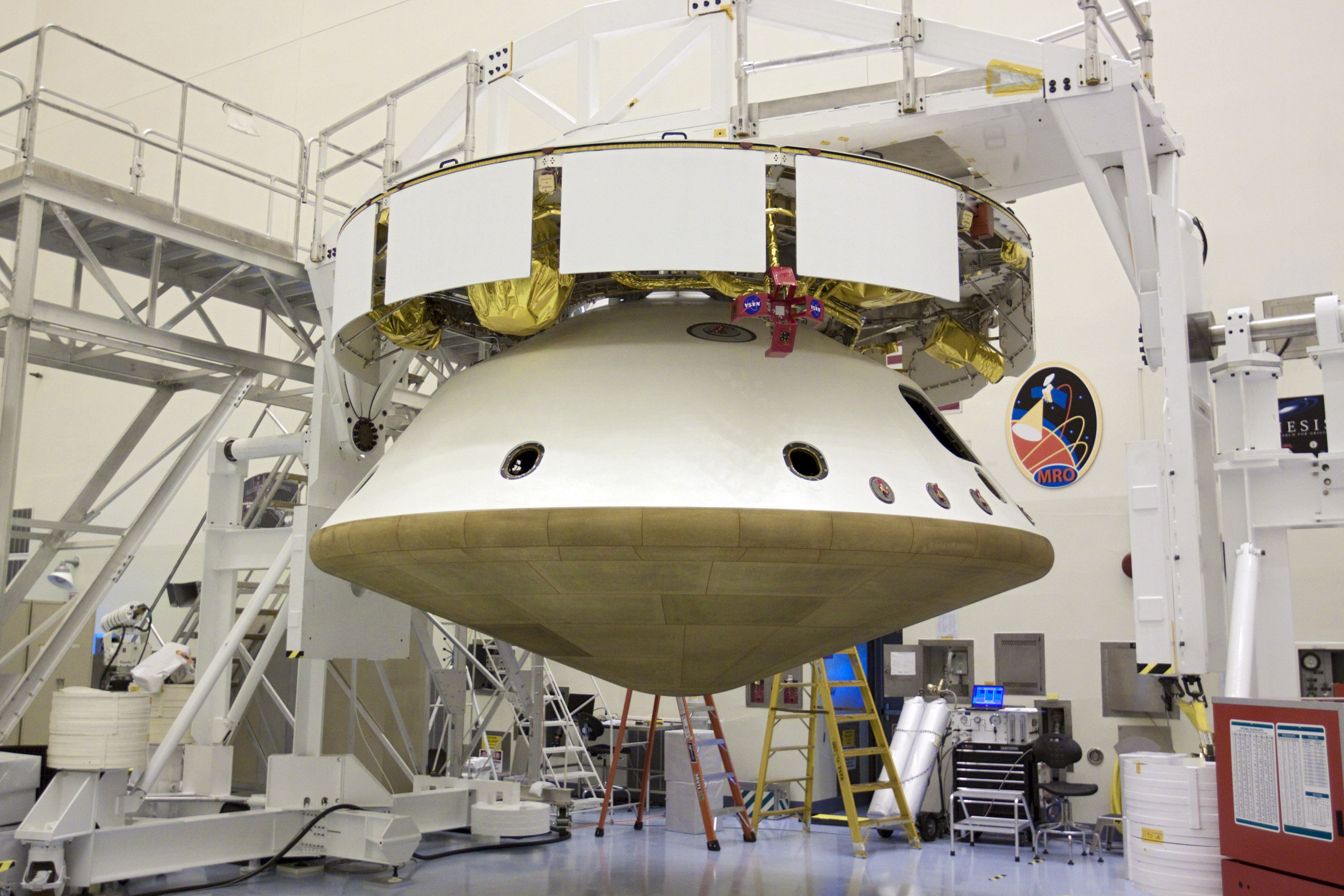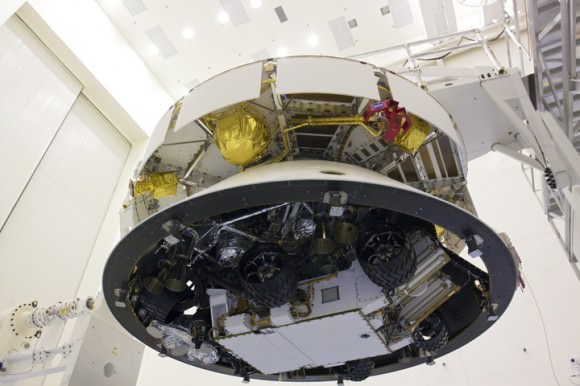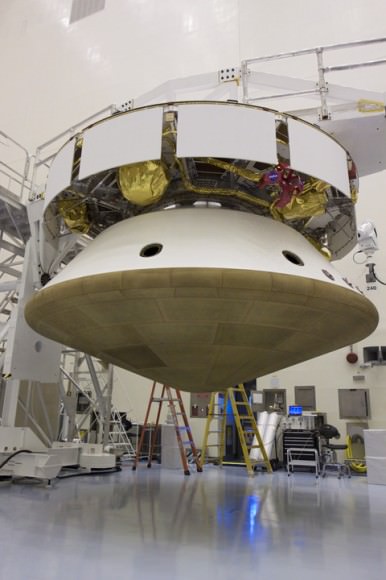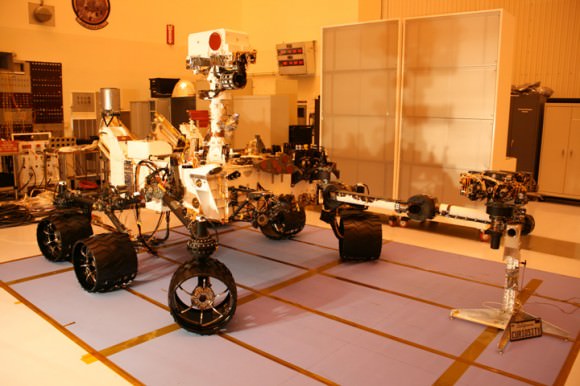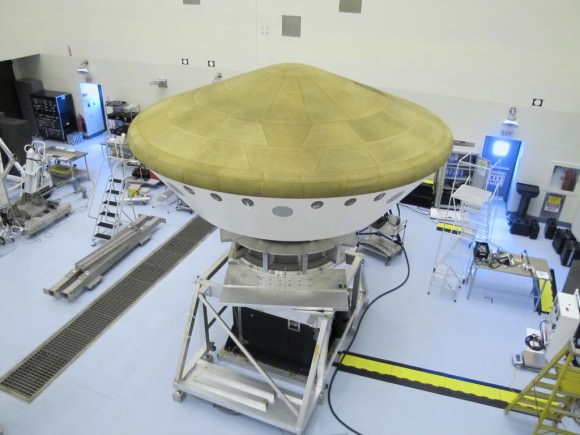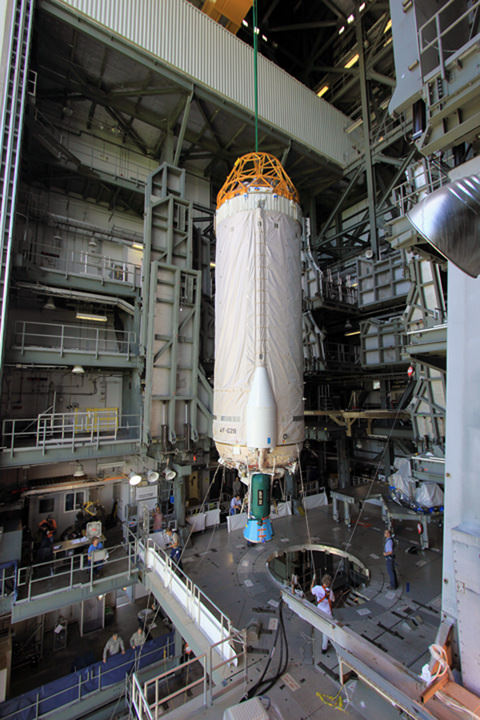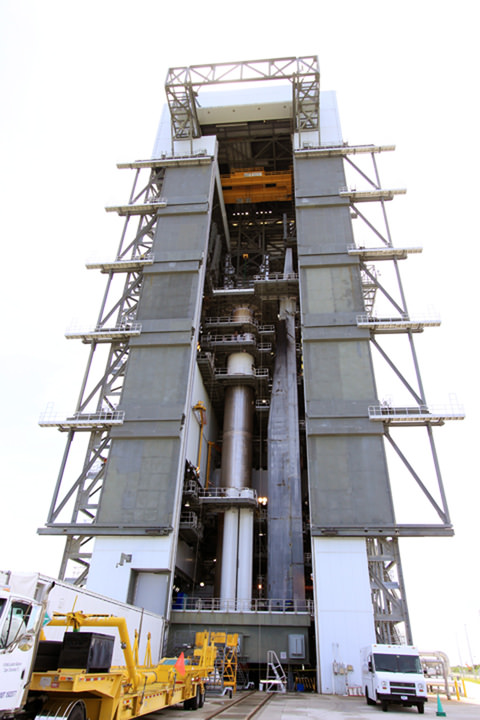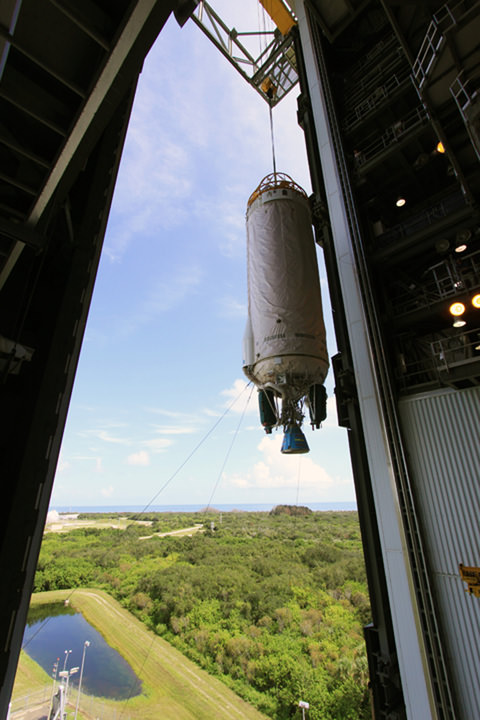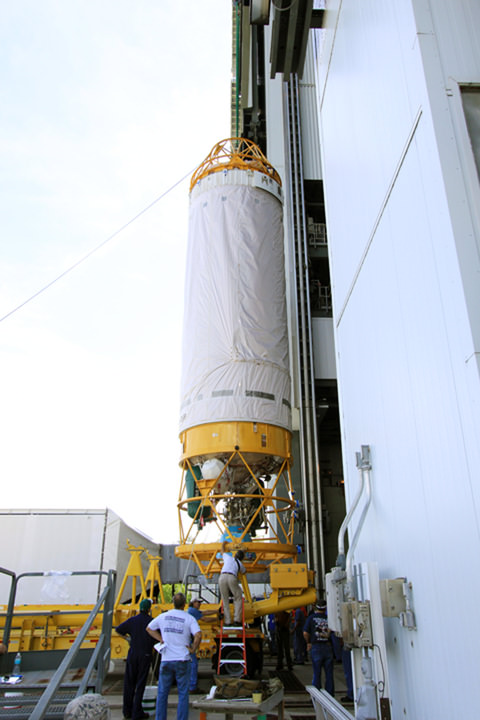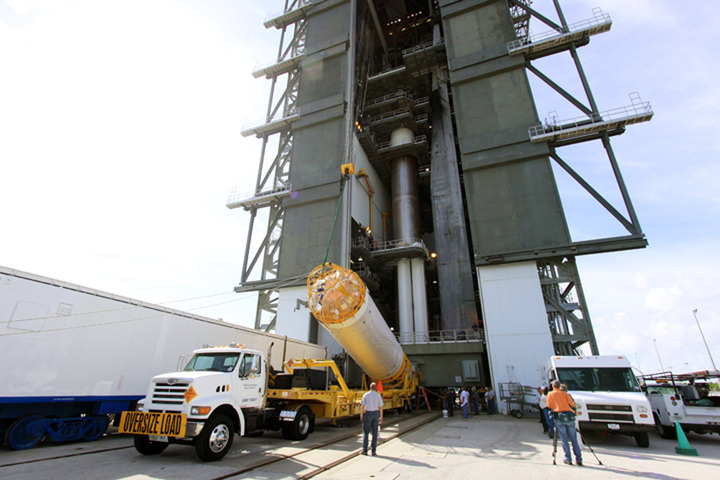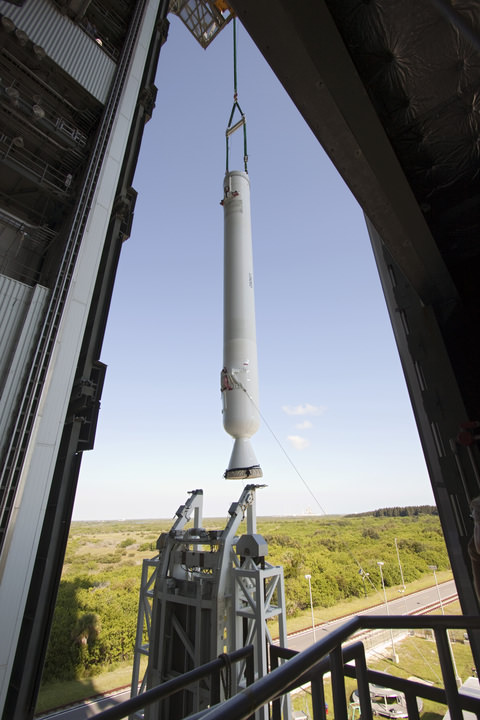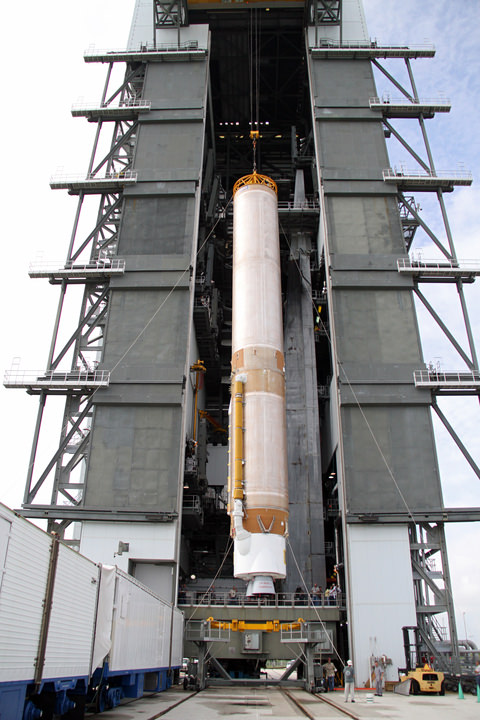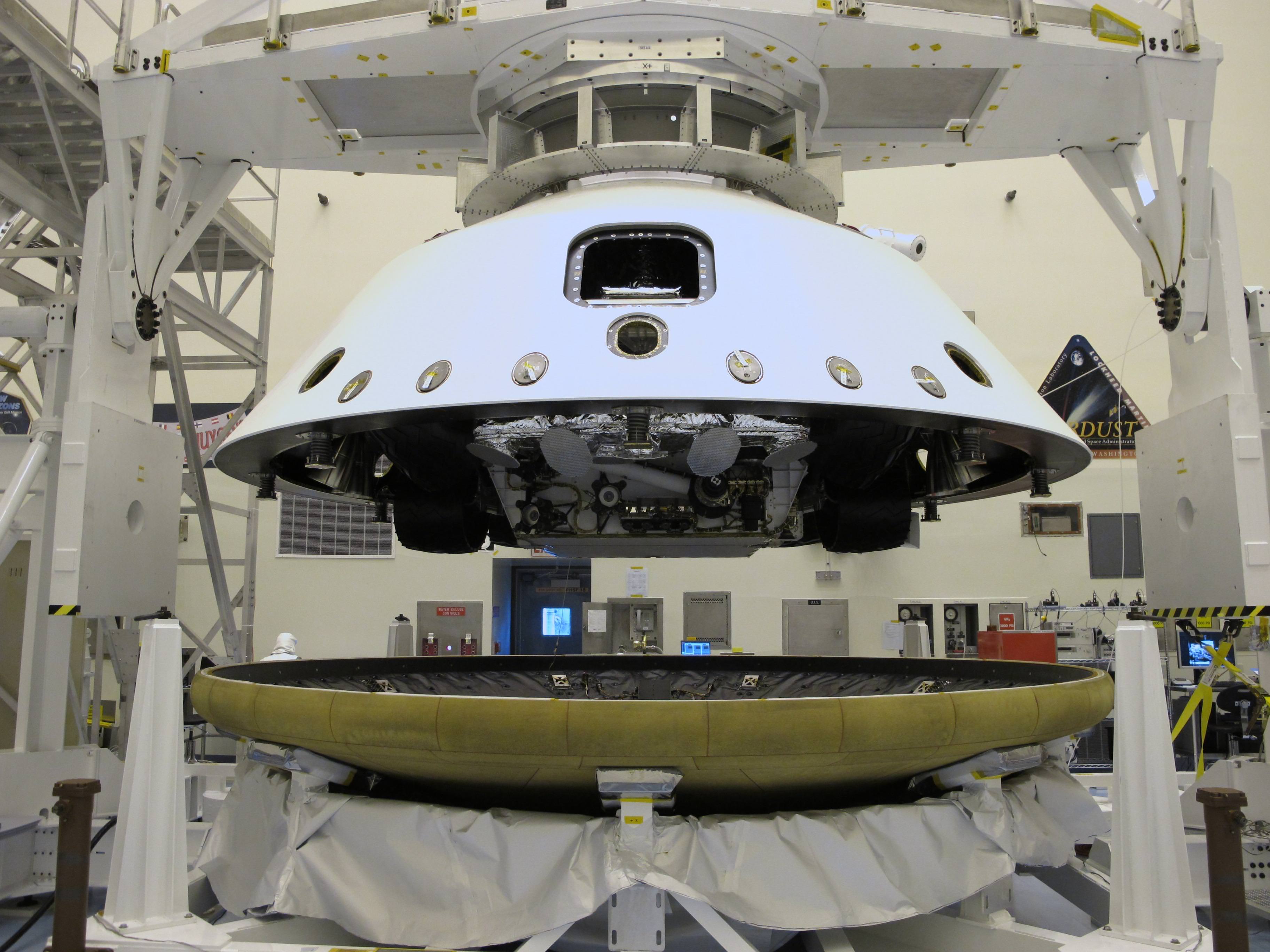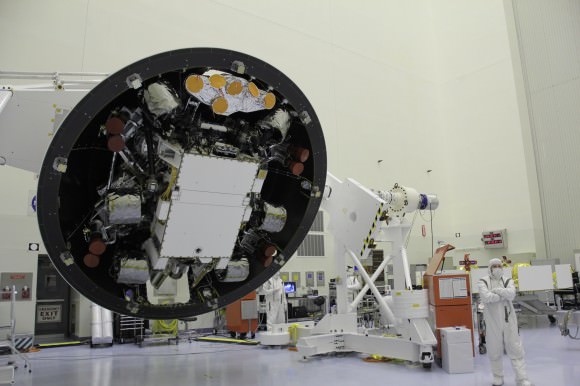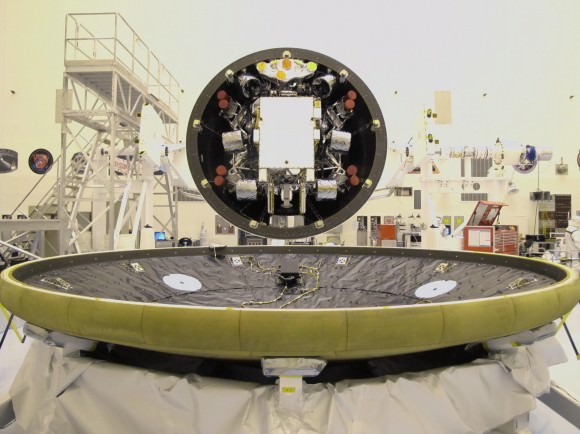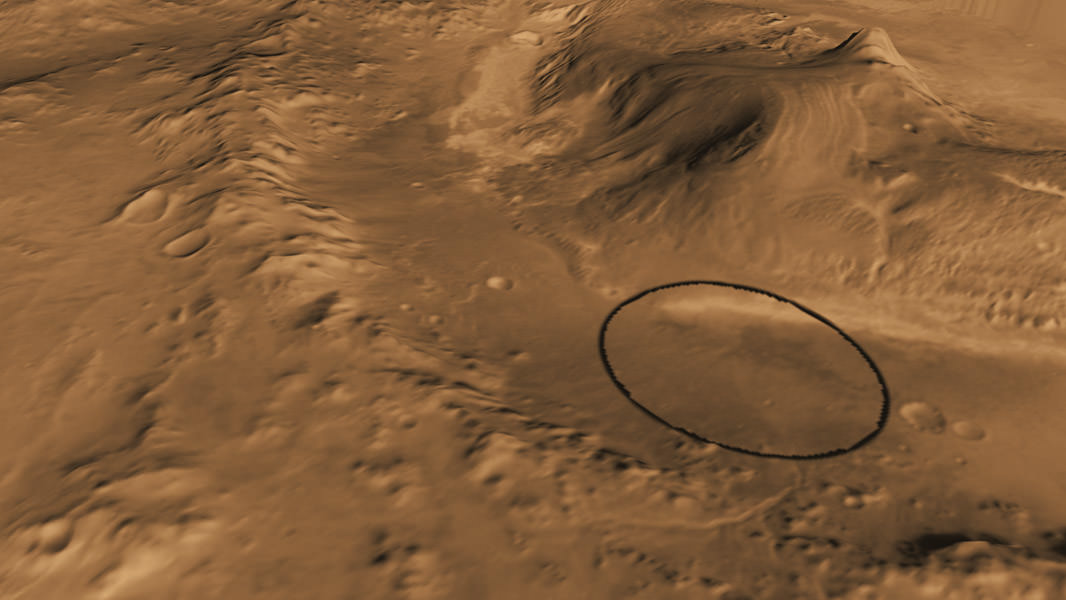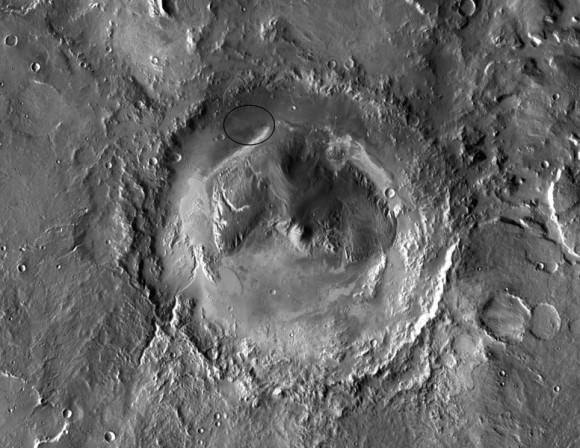[/caption]
In less than 48 hours, Russia’s bold Phobos-Grunt mechanized probe will embark on a historic flight to haul humanities first ever soil samples back from the tiny Martian moon Phobos. Liftoff from the Baikonur Cosmodrome remains on target for November 9 (Nov 8 US 3:16 p.m. EDT).
For an exquisite view of every step of this first-of-its-kind robot retriever, watch this spectacular action packed animation (below) outlining the entire 3 year round trip voyage. The simulation was produced by Roscosmos, Russia’s Federal Space Agency and the famous IKI Space Research Institute. It’s set to cool music – so don’t’ worry, you don’t need to understand Russian.
Another video below shows the arrival and uncrating of the actual Phobos-Grunt spacecraft at Baikonur in October 2011.
The highly detailed animation begins with the blastoff of the Zenit booster rocket and swiftly progresses through Earth orbit departure, Phobos-Grunt Mars orbit insertion, deployment of the piggybacked Yinghuo-1 (YH-1) mini satellite from China, Phobos-Grunt scientific reconnaissance of Phobos and search for a safe landing site, radar guided propulsive landing, robotic arm manipulation and soil sample collection and analysis, sample transfer to the Earth return capsule and departure, plummeting through Earth’s atmosphere and Russian helicopter retrieval of the precious cargo carrier.
Video Caption: Every step of Russia’s Phobos-Grunt soil retrieval mission. Credit: Roscosmos/IKI
Video Caption: On October 21, the Phobos-Grunt spacecraft arrived at the Baikonur Cosmodrome and was uncrated and moved to assembly building 31 for fueling, final preflight processing and encapsulation in the nose cone. Credit: Roscosmos
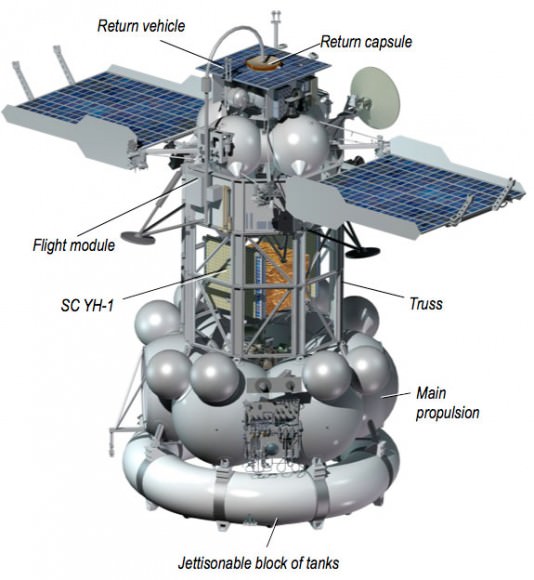
Read Ken’s continuing features about Phobos-Grunt upcoming Nov. 9 launch here:
Phobos-Grunt and Yinghuo-1 Encapsulated for Voyage to Mars and Phobos
Phobos and Jupiter Conjunction in 3 D and Amazing Animation – Blastoff to Martian Moon near
Russia Fuels Phobos-Grunt and sets Mars Launch for November 9
Phobos-Grunt and Yinghou-1 Arrive at Baikonur Launch Site to tight Mars Deadline
Phobos-Grunt: The Mission Poster
Daring Russian Sample Return mission to Martian Moon Phobos aims for November Liftoff

